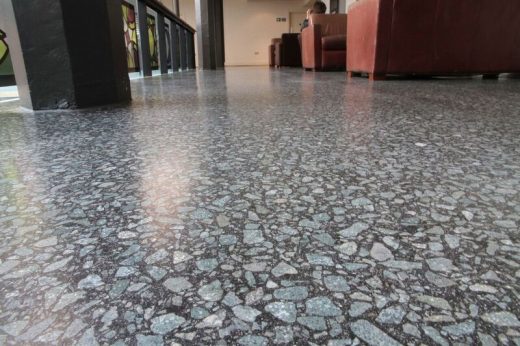Introduction
Analysis of structures is important for safe design and serviceability to resist loads coming from various sources. These loads re taken into account while designing so that the building does not fail under the application of these loads. These loads may be in the form of uniformly distributed load, concentrated load, triangular load and so on. All these have various points of application and so the center of mass is to be detected for making the calculations easy in every aspect. For example, in seismic zones, the earthquake load plays an important role which is to be considered in seismic analysis. Similarly, in some areas wind is the predominant force and it imposes load on the building which needs to be analysed before any disaster strikes. All these loads create a significant impact in performing structural analysis and any slight calculation mistakes can create life threatening situations.
By
Mr. S.L. Ghorpade
Under the guidance of Prof. A.B. Shendge
Dattakala Group of Institutions Faculty of Engineering, Swami – Chincholi (Bhigwan).
Abstract- The construction of tunnel is important for different purposes. They can be constructed for railways, roadways, pedestrian footways and can be built in hard rock, soft ground, river bed and are also used to convey Hydroelectric power, water stream, or as a sewer. The construction of Diversion Tunnel, Pressure Shaft, and Tailrace Tunnel to convey water is considered in this project. To identify Scheduling of different activities by various methods Network Diagram, C.P.M., P.E.R.T. and their cycle time is calculated. Scheduling for different activity is carried out with the help of Network Diagram & Primavera Software will be carried out in a project stage II. Study of Estimation for a Diversion Tunnel, Pressure Shaft, and Tailrace Tunnel by both methods. Excavation in heading and benching, Rock bolt support work, lining work is considered for cycle time and cost estimation calculation in Diversion Tunnel, Pressure Shaft, and Tailrace Tunnel. Estimation is also carried out by two methods. The comparison of two methods adopted for excavation work and estimation will be carried out in a project stage II.
Keywords- Scheduling, C.P.M., P.E.R.T., Gantt chart, Network Diagram, Estimation, Heading, Benching, Cycle time, Lining, Rock Bolts, Diversion Tunnel, Pressure Shaft, Tailrace Tunnel.
Introduction
Computer-Aided Design Software or CAD is used to create, analyze, modify, or stimulate for optimizing design. Architects, engineers, and designers use it to create or modify designs in 2D or 3D that was impossible to be exhibited on paper. It transforms designs into codes that are understandable by the computer, resulting in viewing a designed object from various perspectives.
Different companies use different CAD software versions to carry out desired results for the company’s standards. CAD offers expandable features that can be used by companies working in various fields. This software facilitates conversion from design to construction process. Because of low-cost development and less time consumption, this software is gaining traction. Some of such software that is used in various industries shall be discussed here in details.
Read More
Introduction:
Asphalt is petroleum liquid with a very high viscosity. In many settings, asphalt flooring is the best solution. Asphalt mastic is created by mixing asphalt and sand in a 2:1 ratio when used as a flooring layer over a concrete subfloor. In place of sand, asphalt can be used to create a marble mosaic. Aside from asphalt, inert chemicals and mineral pigments are used to create asphalt tiles.

Fig: Asphalt flooring
Courtesy: designingbuildings.co.uk
INTRODUCTION
Cracks in concrete are common and it if often misunderstood as not having done mixing properly or compaction properly or problem in foundation and many more. In general cases cracks sizes ranging from 1/4 inch to 1/16 inch is considered to be acceptable limit. One can control cracking by properly preparing the subbase, proper curing, not favouring under-reinforcement or over-reinforcement, by proper placing and spacing crack control joints, etc. To fix narrow cracks in concrete, caulk-style concrete repair compound is used because of its easy application. For larger cracks especially in case of walls, epoxy injection kit is used which allows deep penetration through cracks. In case of repairing of stairs, vinyl concrete patcher is used as it is durable and easy to mould into a step like shape.
Introduction:
Concrete is a building material made of cement, aggregates (rock and sand), water, and additives (chemicals that enhance or modify the properties of concrete). There are a lot of chemicals used in construction now. From concrete admixtures to sealants, grouts, bonding agents, and waterproofing chemicals, the construction chemicals industry has a wide range of products. The construction industry uses these chemicals in a lot of different ways. These construction chemicals can make concrete stronger, and when used in different ways and amounts, they can also help get around many other problems. One chemical that is used in concrete is a “bonding agent.” This article will discuss concrete bonding agents and different types of concrete bonding agents.
Introduction:
The gradient of a road is crucial to the road’s very existence. The topography of most areas is not flat. Slopes are common on things that vary in scale. If a road were built there, there would likely be accidents. Road slopes facilitate these height fluctuations, which allow for smooth vehicle travel.

Fig: Different Types of Gradient of Roads
Courtesy: constructioncost.co
Introduction:
Construction workers must use various shoring methods when working on excavations or building sites to keep a building from falling over. Shoring may help professionals meet safety standards and prevent accidents from happening while digging and building. Shoring is building temporary structures to support unstable structures in the short term. These hold up the side walls. When walls buckle, when walls crack because foundations sink unevenly, or when cracked walls need to be fixed, shoring is needed to take down nearby buildings if a hole in the wall needs to be fixed or made bigger.
What is Shoring:
Shoring is temporary side support used in construction, repairs, and excavations. It can be used when walls bulge out, when walls crack because of uneven foundation settlement and need to be fixed, when an adjacent structure needs to be torn down, or when new holes or openings need to be made in walls. In construction, shoring is needed to support a deep excavation so that the retained soil doesn’t topple over and cause a mistake on the project. Its support depends on the soil type and the difference in an excavation level at least 1.20 meters from ground level.
Introduction:
Over the years, people in construction projects have always thought of new ways to do things. From the strong concrete used in old buildings to the steel used in bridges and skyscrapers, we can see how technology has changed the building industry. Some things change over time, while others are brand new. People had to develop new and creative ideas to keep up with the need for housing, natural disasters, and rising construction costs. This article will talk about some new, innovative building materials.
What is Innovation in Construction?
Regarding building materials, innovation means improving their quality and properties. The old material can be changed while its useful properties stay the same, or a new material can be used instead. Improving the building’s processes, products, or services is also a part of being innovative with building materials.
Introduction:
The parapet wall is a crucial structural element of our home. When completed, it forms a protective barrier at the end of the roof of the building or balcony. The parapet wall is crucial to the security of the building’s inhabitants. A parapet is usually the top part of a wall that goes over the roof and protects the roof, gutters, balconies, and walkways of houses, churches, castles, apartment buildings, commercial buildings, and other types of buildings. It could be made of bricks, stones, concrete, wood, or glass. A parapet can also stop a fire from spreading to a roof and protect against a sudden fall that could be fatal.
